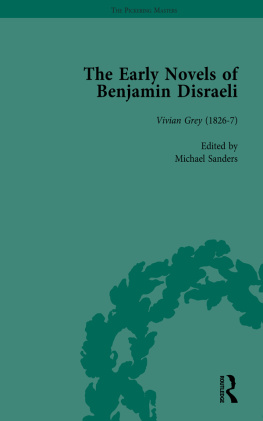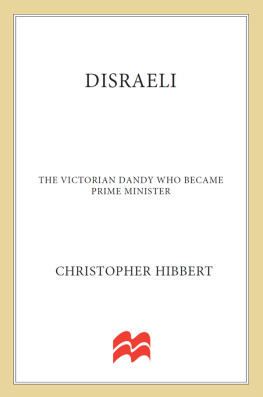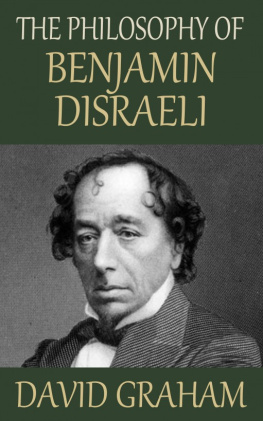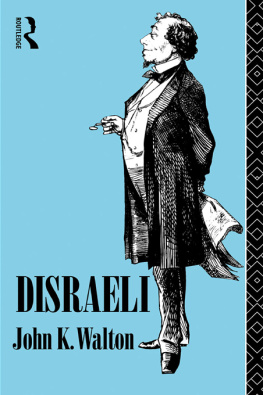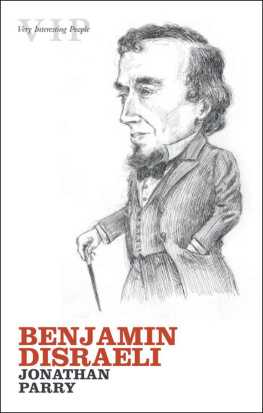THE PICKERING MASTERS
THE EARLY NOVELS OF BENJAMIN DISRAELI
Volume 1
THE PICKERING MASTERS
General Introduction: Daniel R. Schwarz
Volume Editors: Geoffrey Harvey
Ann R. Hawkins
Miles A. Kimball
Jeraldine R. Kraver
Charles Richmond
Michael Sanders
First published 2004 by Pickering & Chatto (Publishers) Limited
Published 2016 by Routledge
2 Park Square, Milton Park, Abingdon, Oxon OX14 4RN
711 Third Avenue, New York, NY 10017, USA
Routledge is an imprint of the Taylor & Francis Group, an informa business
Taylor & Francis 2004
General Introduction Daniel R. Schwarz 2004
Introduction and notes Michael Sanders 2004
All rights reserved, including those of translation into foreign languages. No part of this book may be reprinted or reproduced or utilised in any form or by any electronic, mechanical, or other means, now known or hereafter invented, including photocopying and recording, or in any information storage or retrieval system, without permission in writing from the publishers.
Notice
Product or corporate names may be trademarks or registered trademarks, and are used only for identification and explanation without intent to infringe.
BRITISH LIBRARY CATALOGUING IN PUBLICATION DATA
Disraeli, Benjamin, 18041881
The Early Novels of Benjamin Disraeli. (The Pickering masters)
I. Title
823.8[F]
LIBRARY OF CONGRESS CATALOGING - IN - PUBLICATION DATA
A catalogue record for this title is available from the Library of Congress
ISBN-13: 978-1-85196-736-0 (set)
Typeset by P&C
CONTENTS OF THE EDITION
V OLUME 1
General Introduction
by Daniel R. Schwarz
Vivian Grey (18267)
edited by Michael Sanders
V OLUME 2
The Young Duke (1831)
edited by Miles A. Kimball
V OLUME 3 Contarini Fleming (1832)
edited by Charles Richmond
V OLUME 4
The Wondrous Tale of Alroy (1833)
edited by Geoffrey Harvey
V OLUME 5
Henrietta Temple (1837)
edited by Jeraldine R. Kraver and Ann R. Hawkins
V OLUME 6
Venetia (1837)
edited by Ann R. Hawkins and Jeraldine R. Kraver
Index
CONTENTS
Book the First
Book the Second
Book the Third
Book the Fourth
Book the Fifth
Book the Sixth
Book the Seventh
Book the Eighth
- Book the First
- Book the Second
- Book the Third
- Book the Fourth
- Book the Fifth
- Book the Sixth
- Book the Seventh
- Book the Eighth
Guide
The novels reprinted in this collection have been prepared using the first editions, with textual variants noted to subsequent authorized lifetime editions. As such we have reproduced the inconsistencies of spelling, use of foreign accents and punctuation which appeared in the first editions. We have also followed the original divisions of the novels, which accounts for inconsistencies between volumes in the separation into books or parts.
Some minor stylistic changes have been made in order to maintain consistency throughout the set. For example, chapter openings are consistently in small capitals and are not indented. Poems and quotations within the text are indented and set in a smaller font than the main text. Where lines originally existed between book and chapter headings these have been indicated by a single line, but inconsistencies in this practice within a volume, or use of double lines, have not been reproduced. Double quotation marks have been used throughout the novels, and spaced en-dashes have been used in place of closed em-dashes.
I
Disraelis career as a novelist gives an important if partial insight into his elusive but evolving personality and character. His novels are imagined worlds that reflect and parody aspects of nineteenth-century life, but they are also the psychic and linguistic gestures of a major historical figure. It was while considering Disraeli that Sir Isaiah Berlin wrote: A man may not be sincere in his political speeches or his letters, but his works of art are of himself and tell one where his true values lie. Reading Disraelis novels we read the biography of his soul. Particularly in the period between 1826 and 1836, the novels are his most revealing actions in the sense that they most accurately reflect his doubts and anxieties, his hopes and aspirations. In the novels, Disraeli presented various aspects of his complicated personality as he imagined it at a particular time and place; the novels stand as metaphorical vehicles for which his mind and psyche are the tenors. Coexisting within the novels are conflicting aspects of Disraelis character: Disraeli the stern moralist and Disraeli the optimist; Disraeli the imaginative man seeking refuge in his fantasies and Disraeli the pragmatist; Disraeli the private man who enjoys introspective moments, and Disraeli the public figure who hides his emotions beneath a faade of nonchalance, and, of course, Disraeli the Jew: Disraeli the victim of anti-Semitism, Disraeli the aggressive spokesman for the Jewish perspective as he saw it. The figure that emerges is not only multidimensional and complex, but almost larger than life. Disraeli as an artist not only captures our imagination because he is a major political figure, but because we recognize, as did his contemporaries, that he was one of the remarkable figures of his era.
Disraelis literary career spans over half a century, from 1826 to 1880. He published the first volumes of Vivian Grey when Scott, Blake, Wordsworth and Coleridge were still alive and before any of the major Victorians, excepting Carlyle, were published. He concluded his career in 1880, a year when Dickens and Thackeray were dead and George Eliot was to die, and Thomas Hardy had already published Far From the Madding Crowd and The Return of the Native.
Disraelis novels tell us something about the history of taste in the nineteenth century. His early novels Vivian Grey (18267), The Young Duke (1831), Contarini Fleming (1832) met the middle-class desire for revelations of aristocratic life, for romances about bizarre characters in strange lands, and for extreme behaviour on the part of wilful egoists posing as latter-day Byrons. As an outsider, as a man who savoured his own feelings and sought unusual sensations, the youthful Disraeli saw himself as an heir to Byron and Shelley. But in the later 1830s, Disraeli, like Dickens, responded to audiences who wanted sentiment and sweetness; in Henrietta Temple (1837), Disraeli wrote about love between virginal young women and idealistic young men whose motives are temporarily misunderstood because of circumstances beyond their control. Even when he wrote of Byron and Shelley in Venetia (1837), he threw the mantle of Victorian respectability over them in spite of his empathy with their unconventionality. In the late 1840s, he met the demand for serious novels that addressed major moral and political ideas. In Lothair (1870) he drew upon the publics fascination rekindled by the conversion of the Marquess of Bute with the journey from Anglicanism to Roman Catholicism, while in Endymion (1880) he responded to the interest in character psychology created by Browning, Eliot and Hardy, which was really part of an inward turning and questioning as the Victorian era passed its high tide of confidence. Throughout his career his fiction fulfilled the nineteenth-century fascination with heroic men; this fascination reflected a need for larger-than-life personalities in an age of uncertainty.

